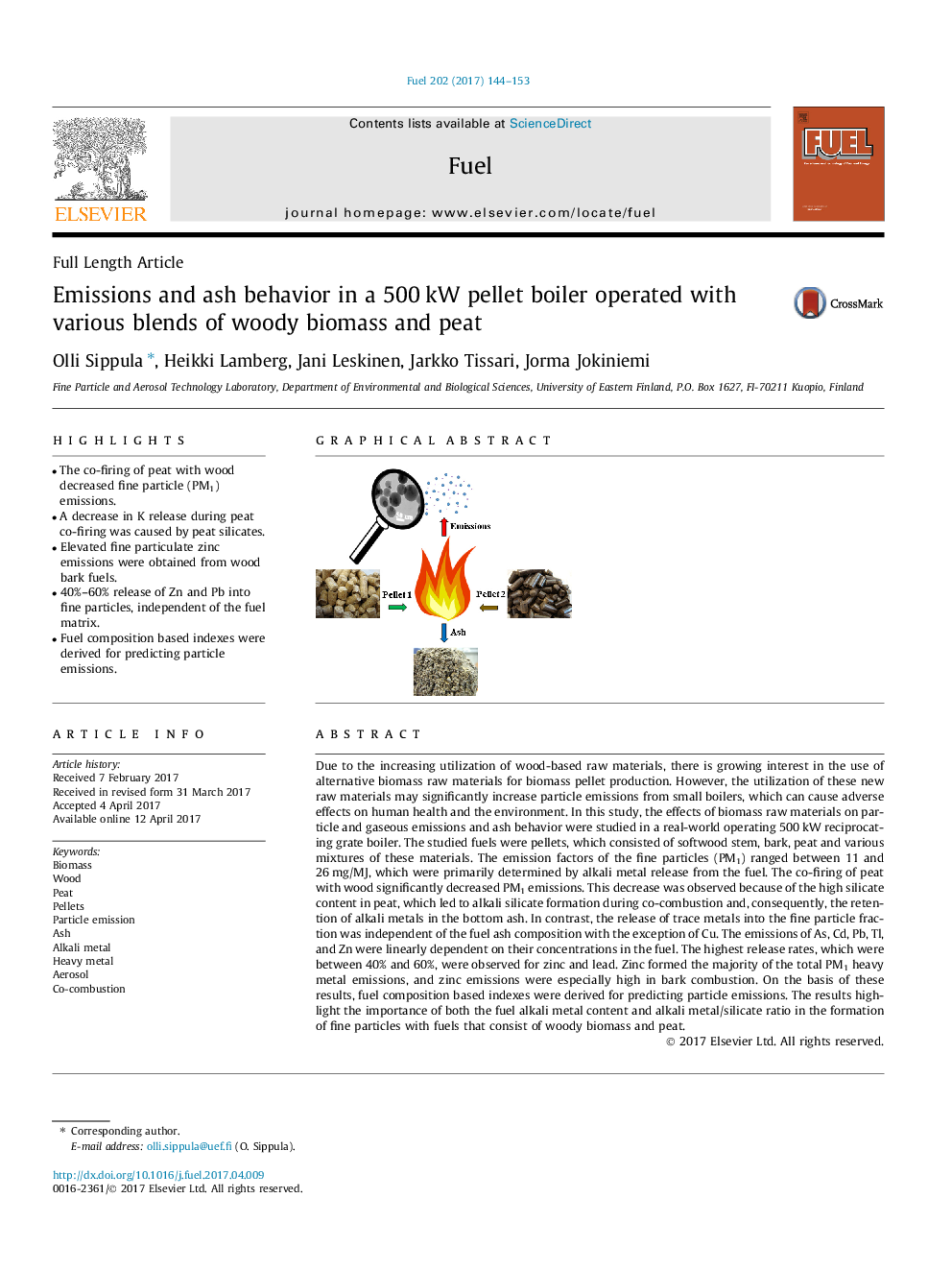| کد مقاله | کد نشریه | سال انتشار | مقاله انگلیسی | نسخه تمام متن |
|---|---|---|---|---|
| 6474538 | 1424962 | 2017 | 10 صفحه PDF | دانلود رایگان |

- The co-firing of peat with wood decreased fine particle (PM1) emissions.
- A decrease in K release during peat co-firing was caused by peat silicates.
- Elevated fine particulate zinc emissions were obtained from wood bark fuels.
- 40%-60% release of Zn and Pb into fine particles, independent of the fuel matrix.
- Fuel composition based indexes were derived for predicting particle emissions.
Due to the increasing utilization of wood-based raw materials, there is growing interest in the use of alternative biomass raw materials for biomass pellet production. However, the utilization of these new raw materials may significantly increase particle emissions from small boilers, which can cause adverse effects on human health and the environment. In this study, the effects of biomass raw materials on particle and gaseous emissions and ash behavior were studied in a real-world operating 500Â kW reciprocating grate boiler. The studied fuels were pellets, which consisted of softwood stem, bark, peat and various mixtures of these materials. The emission factors of the fine particles (PM1) ranged between 11 and 26Â mg/MJ, which were primarily determined by alkali metal release from the fuel. The co-firing of peat with wood significantly decreased PM1 emissions. This decrease was observed because of the high silicate content in peat, which led to alkali silicate formation during co-combustion and, consequently, the retention of alkali metals in the bottom ash. In contrast, the release of trace metals into the fine particle fraction was independent of the fuel ash composition with the exception of Cu. The emissions of As, Cd, Pb, Tl, and Zn were linearly dependent on their concentrations in the fuel. The highest release rates, which were between 40% and 60%, were observed for zinc and lead. Zinc formed the majority of the total PM1 heavy metal emissions, and zinc emissions were especially high in bark combustion. On the basis of these results, fuel composition based indexes were derived for predicting particle emissions. The results highlight the importance of both the fuel alkali metal content and alkali metal/silicate ratio in the formation of fine particles with fuels that consist of woody biomass and peat.
73
Journal: Fuel - Volume 202, 15 August 2017, Pages 144-153